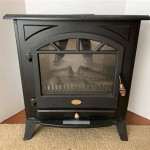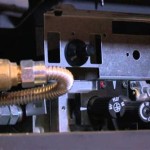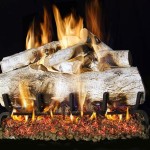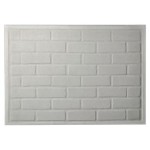```html
Corner Gas Fireplaces: A Space-Saving and Stylish Heating Solution
Corner gas fireplaces offer a unique and efficient way to add warmth and ambiance to a home. Unlike traditional fireplaces designed for flat walls, corner units are specifically engineered to fit snugly into the intersection of two walls. This design element provides a significant advantage in terms of space utilization, making them a popular choice for rooms with limited wall space or unconventional layouts. The installation of a corner gas fireplace often enhances the aesthetic appeal of a room while providing a reliable source of heat.
The functionality of a corner gas fireplace is consistent with other gas fireplace models. They operate by burning natural gas or propane, producing flames that are visually appealing and generate heat. These fireplaces commonly feature realistic-looking logs or decorative glass media, further mimicking the appearance of a traditional wood-burning fireplace. A key advantage of gas fireplaces is their ease of use; they require no wood to haul or ashes to clean, offering a convenient alternative for homeowners who desire the warmth and aesthetic appeal of a fireplace without the associated maintenance.
The design of a corner gas fireplace allows for considerable flexibility in terms of architectural integration. They can be framed with various materials, from traditional wood mantels to modern tile or stone surrounds, accommodating a wide range of interior design styles. Furthermore, the corner placement can create a focal point in the room, drawing the eye and contributing to the overall visual balance. The versatility in design and function makes corner gas fireplaces a desirable option for various residential settings.
Space Optimization and Room Design
One of the primary benefits of a corner gas fireplace is its ability to optimize space within a room. By utilizing the corner of a room, which often goes underutilized, these fireplaces free up valuable wall space for furniture placement, artwork, or other architectural features. This is particularly advantageous in smaller rooms or those with irregular shapes where space is at a premium. The corner placement also allows for a wider viewing angle of the flames, enhancing the ambiance and creating a more immersive experience for those in the room.
Furthermore, the strategic placement of a corner fireplace can significantly influence the overall design and flow of a room. It can serve as a natural divider between different living areas, effectively delineating spaces without the need for physical walls. For instance, a corner fireplace could separate a living room area from a dining area in an open-concept floor plan, creating distinct zones while maintaining a cohesive aesthetic. The architectural presence of a corner fireplace can also establish a sense of balance and symmetry within the room, contributing to a more visually pleasing environment.
The design possibilities extend beyond the simple placement of the fireplace. Custom-built shelving or cabinetry can be integrated around the fireplace to create a cohesive and functional built-in unit. This approach not only maximizes storage space but also enhances the visual appeal of the fireplace and its surrounding area. The integrated design can transform the corner of the room into a sophisticated and practical focal point.
Efficiency and Heating Performance
Modern corner gas fireplaces are designed with efficiency in mind. Many models incorporate advanced burner technology and heat management systems to maximize heat output while minimizing energy consumption. Direct vent technology, for example, draws combustion air from outside the home and vents exhaust gases directly outdoors, preventing drafts and ensuring efficient combustion. This sealed combustion system contributes to improved heating performance and reduced energy costs.
The heating capacity of a corner gas fireplace is typically measured in BTUs (British Thermal Units). The appropriate BTU rating for a given space depends on factors such as the size of the room, the insulation levels, and the local climate. Selecting a fireplace with the appropriate BTU output ensures that the room is adequately heated without excessive energy consumption. Many corner gas fireplaces also feature adjustable flame settings and thermostat controls, allowing homeowners to customize the heat output to their specific needs and preferences.
Beyond their heating capabilities, corner gas fireplaces can also contribute to overall energy efficiency by supplementing a home's central heating system. By providing localized heat in commonly used living areas, these fireplaces can reduce the reliance on central heating, potentially lowering energy bills during colder months. The ability to control the heat output and zone heating to specific areas of the home provides a cost-effective and energy-efficient heating solution.
Installation and Safety Considerations
The installation of a corner gas fireplace requires adherence to strict safety standards and local building codes. It is highly recommended that a certified professional be employed for both the installation process and any necessary gas line connections. Properly trained technicians can ensure that the fireplace is installed correctly, safely, and in compliance with all applicable regulations. This is crucial for protecting the home and its occupants from potential hazards, such as gas leaks or carbon monoxide poisoning.
The installation process typically involves preparing the corner space, installing the fireplace unit, connecting the gas line, and venting the exhaust gases. Direct vent systems require the installation of venting pipes that extend through an exterior wall, while vent-free systems, though generally less efficient and less safe, may be an option in certain circumstances, subject to local code restrictions. Ensuring proper ventilation is essential for safe and efficient operation. Regular maintenance, including inspections of the venting system and burner components, is also crucial for maintaining optimal performance and preventing potential problems.
Safety features commonly incorporated into corner gas fireplaces include flame sensors, which automatically shut off the gas supply if the flame goes out, and carbon monoxide detectors, which alert occupants to the presence of dangerous levels of carbon monoxide. It is important to regularly test these safety devices to ensure they are functioning correctly. Furthermore, it is essential to follow the manufacturer's instructions for operating and maintaining the fireplace to prevent accidents and ensure its longevity. Adhering to these guidelines will contribute to a safe and enjoyable fireplace experience.
```
Lx2 3 Sided Corner Gas Fireplace Natural The Center

Discover The 61 Best Corner Fireplace Designs In 2024 Living Room Gas
Corner Two Sided Gas Fireplace Heat Glo

The Corner Gas Fireplace A Great Way To Maximize Your Space

Corner Fireplace Ideas New Best 25 Gas Apartment Stone

Maximize Your Space With A Corner Gas Fireplace Aqua Rec S Fireside Hearth N Home

Corner Fireplaces Modern Gas The Davinci Collection

Corner Ventless Gas Fireplace Visualhunt

18 Corner Orno Gas Log Burning Kiva Fireplace Kit Capo Fireside

Hearth Home Technologies Corner Gas Fireplace Fireside
Related Posts








